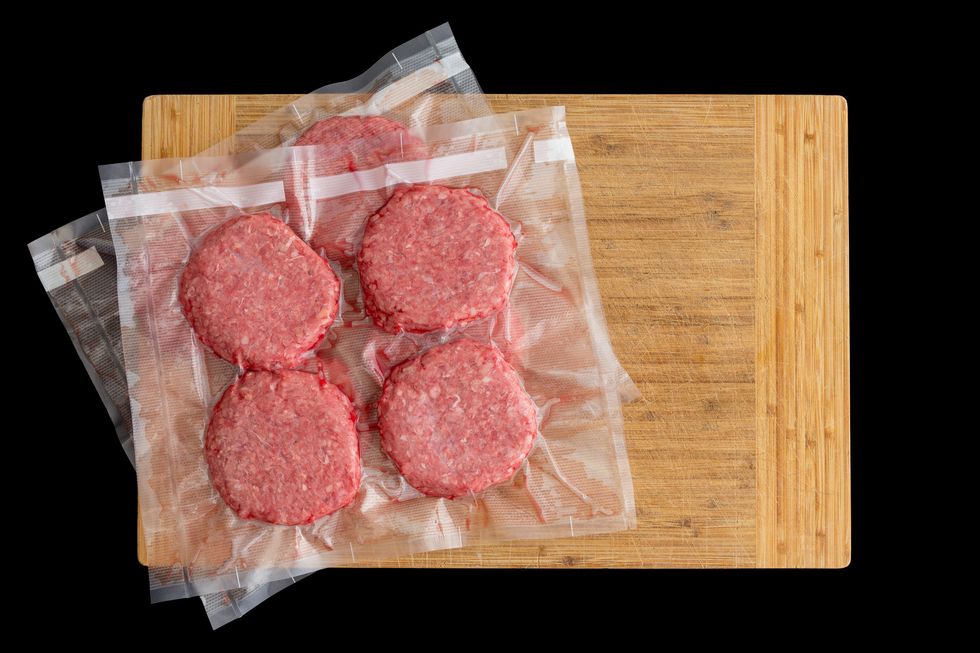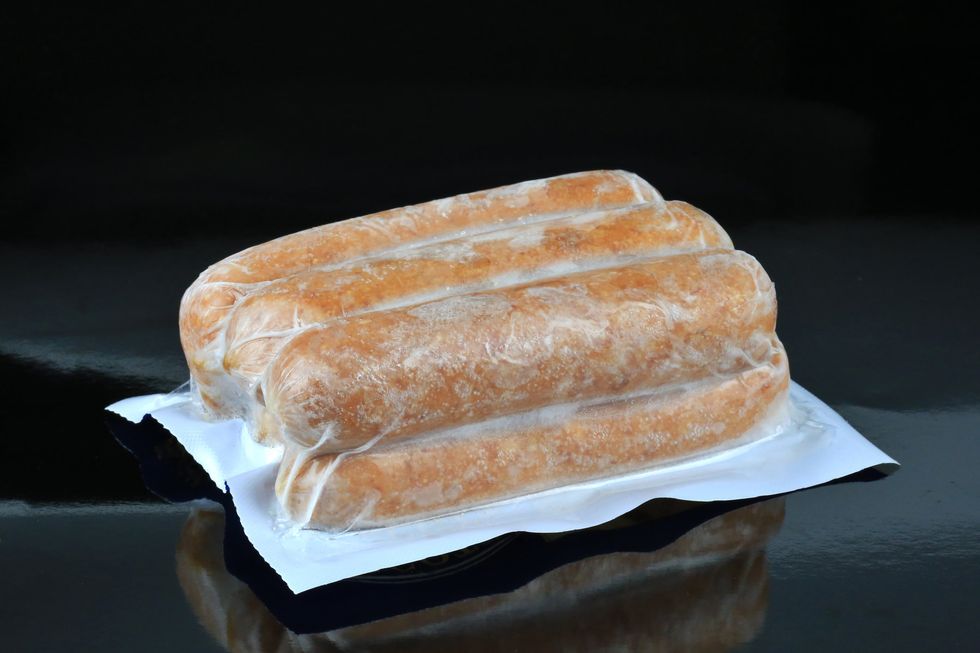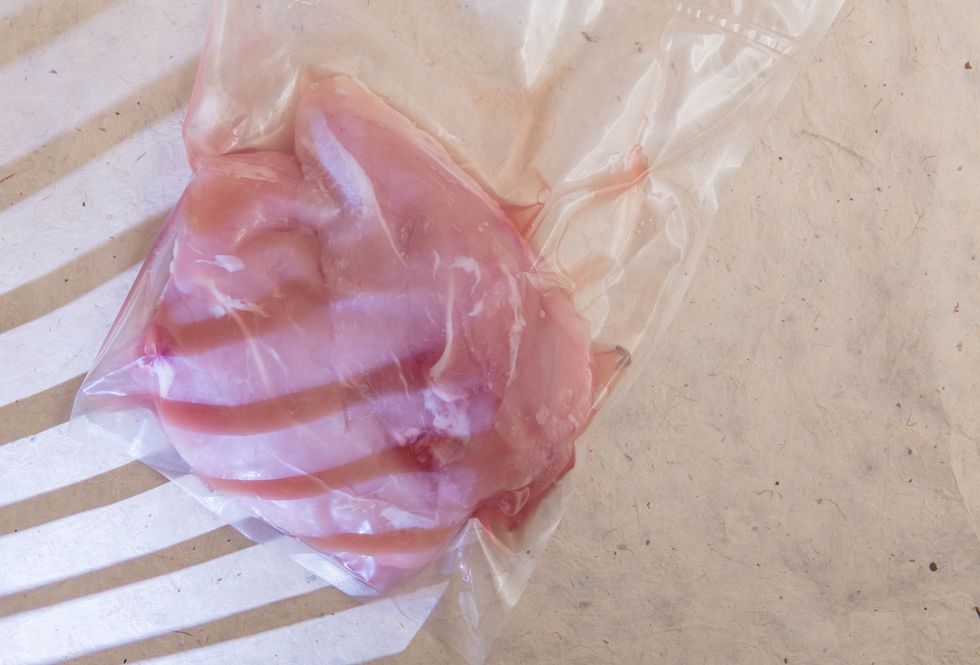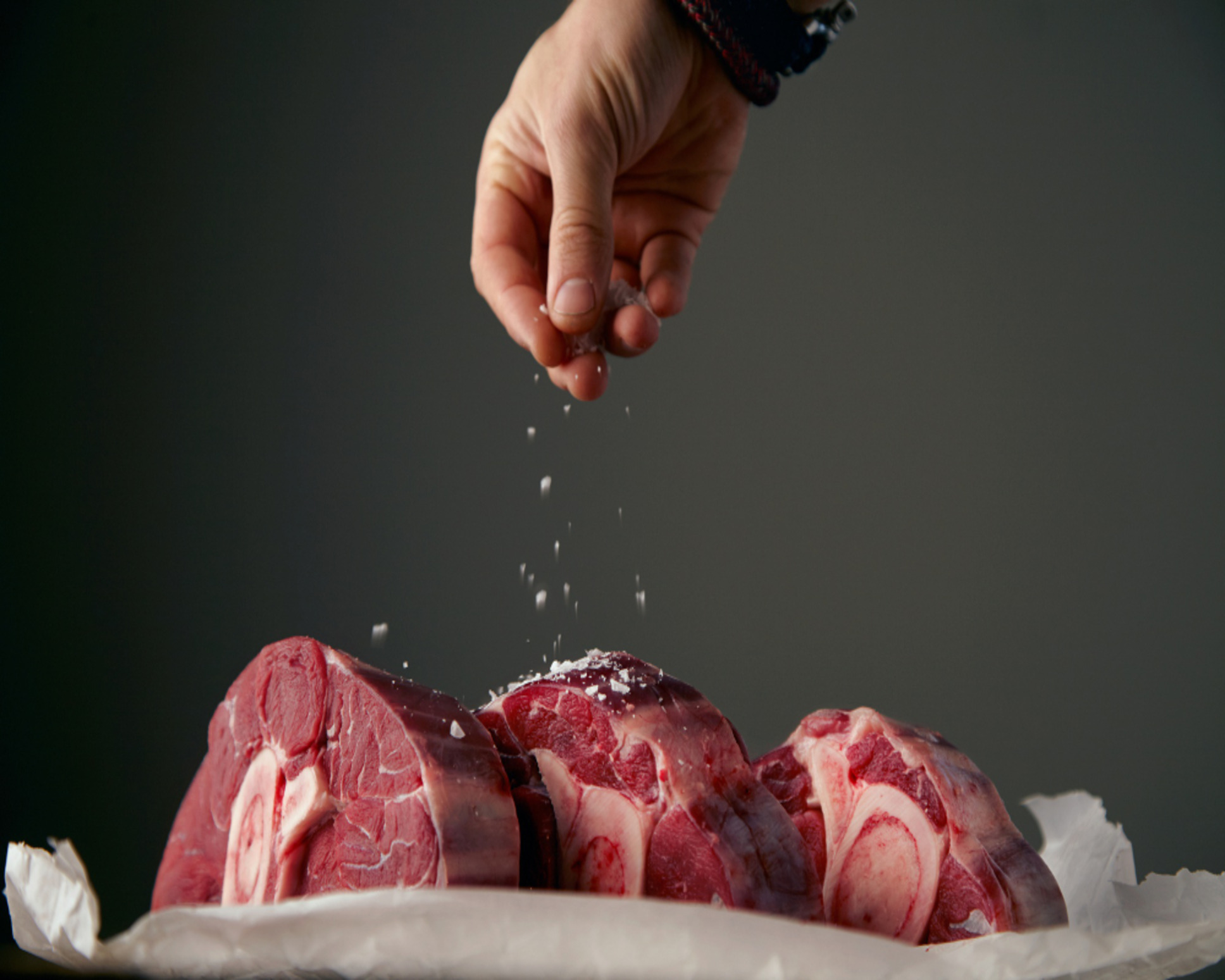If you defrost your meats by leaving them out on your kitchen counters, it’s time to stop. According the the FDA, this is one of the riskiest ways to thaw everything from ground beef to hot dogs. Meat should never be left out in your kitchen, outside before grilling, or anywhere at room temperature to thaw.
The reason?
Defrosting meat at room temp is a potential health risk. The outer layer will defrost faster than the center and start developing harmful bacteria. It’s also not a great idea to cook meat that’s still frozen. While it’s definitely a safer option, the meat won’t cook evenly. The outer layer will turn out overdone and the middle is likely to be undercooked.
What’s the right way to defrost frozen meat?
The best way to thaw frozen meat, poultry, and fish is to place properly packaged, frozen meats in the refrigerator the night before you plan on cooking it. Allowing meat to defrost gradually in the fridge makes sure it thaws evenly and completely without any potential health risks. You can even keep some meats safely in the refrigerator for up to 3 days after thawing.
If you forget to defrost the night before and are pinched for time you can also thaw safely in a bowl of cold water. This method only works well for smaller cuts of meat. You’ll need to change the water every 30 minutes if thawing larger cuts. Small pieces of meat will usually defrost in about 20 minutes.
Remember to always defrost in the packaging when using the cold water method! Here’s the surprising way you can get salmonella from your own kitchen.
 Isolated beef burger patties prepared for freezingGetty Images
Isolated beef burger patties prepared for freezingGetty Images
When it comes to properly freezing different kinds of meats vacuumed sealed bags are going to be your new best friend! No matter what kind of meat you’re freezing, the less air trapped inside the bag, the better. Vacuum sealing prevents any air from circulating in the freezer bag, which prevents freezer burn and helps maintains the most flavor.
If you don’t own a vacuum sealer, double wrapping meats before freezing is a rule you’ll want to follow.
While food that’s frozen in just the packaging from the grocery store can last up to a month in the freezer, if you plan on storing it longer than that, it needs an extra layer of protection. You can add a second layer of air tight protection around packaged meats by wrapping them in foil, freezer paper, or freezer bags.
Another tip for freezing meat is to cut larger pieces into single serving sizes and then wrap and seal each piece separately. Individual cuts will freeze and thaw more evenly. They’re also easier to grab without unsealing, and potentially contaminating a bag that contains several other cuts.
Now that we’ve covered the general freezing and thawing guidelines here’s a few things to note when freezing different kinds of meats.
Meat
 Hotdogs sealed in a vacuum sealed containerGetty Images
Hotdogs sealed in a vacuum sealed containerGetty Images
Fresh cuts of beef, pork, veal, and lamb are safe to store in the freezer for 6-12 months before defrosting according to the U.S Department of Human Health Services. As long as it’s packaged safely. Hot dogs, sausages, lunch meat, and bacon can be stored in the freezer for up to 2 months. Ground meats can last up to 4 months in the freezer.
While it’s always best to freeze any kind of meat right after buying, you can get away with waiting a day or two before freezing when it comes to beef, pork, lamb, and veal. Follow the general guidelines of either vacuum sealing individual cuts or double wrapping them.
Poultry
 Vacuum-sealed chicken filletsGetty Images
Vacuum-sealed chicken filletsGetty Images
Chicken and turkey should be frozen as soon as possible to avoid the risk of salmonella. If you can’t freeze it right away it can be stored safely for up to 2 days in the refrigerator before hand, but don’t wait longer than that.
If you’re freezing a whole bird, make sure you double wrap it with freezer paper and a freezer bag. When wrapped properly a whole chicken or turkey can last for up to 6-9 months in the freezer. While some guidelines say you can freeze for up to a year safely, the flavor won’t be as good.
Individual cuts of chicken breasts, thighs, or drumsticks are best wrapped separately before freezing. When wrapped this way they can last in the freezer for 4-6 months.
Fish
 Salmon filletsGetty Images
Salmon filletsGetty Images
Freezing fish is a little more delicate. Fatty fish like salmon, tuna, and trout should be dipped in a brine made of 1 quart cold water and 2 tablespoons of ascorbic acid before freezing. Lean fish like tilapia, cod, and flounder should be dipped in brine of 1 quart cold water and ¼ cup of salt. Brining before freezing helps firm up the fish fillet and keeps it from going bad quickly.
After brining, wrap each fish fillet separately with freezer paper or vacuum seal individually. Next double seal the wrapped fish with a freezer bag. As long as each piece of fish is individually wrapped first, it’s safe to store multiple pieces in the same freezer bag.










